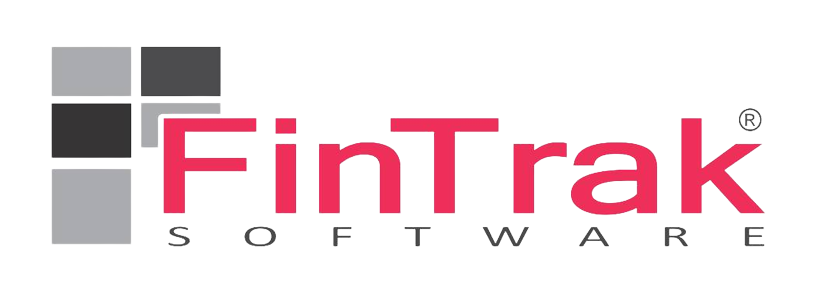Introduction
Credit management solutions refer to the strategies, tools, and processes that businesses use to effectively manage their credit operations. These solutions are designed to help businesses mitigate risks associated with extending credit to customers and ensure timely payment collection. In today’s competitive business landscape, credit management has become increasingly important for organizations of all sizes, especially in financial institutions.
Effective credit management is crucial for the financial health and stability of a financial institution. It helps the organization maintain a positive cash flow by ensuring that invoices are paid on time and bad debts are minimized. By implementing credit management solutions, financial institutions can improve their overall financial performance and make informed decisions about extending credit.
Understanding the Importance of Credit Management
Poor credit management can have serious consequences for businesses. One of the major risks associated with inadequate credit management is late or non-payment by customers, which can lead to cash flow problems and hinder growth opportunities. Additionally, it can result in increased bad debt write-offs, impacting profitability.
On the other hand, effective credit management offers several benefits for organizations. It allows organizations to identify potential risks early on through comprehensive credit checks and monitoring processes. This enables them to make informed decisions about extending credit or setting appropriate limits and terms for customers.
Benefits of Credit Management Solutions for Financial Institutions.
1) Improved Cash Flow:
One of the primary benefits of implementing a robust credit management solution is improved cash flow. By streamlining invoicing processes and ensuring timely payment collection from customers, organizations can optimize their working capital position.
2) Reduced Bad Debt:
Effective credit management solutions help minimize bad debt write-offs by identifying high-risk customers before extending them significant amounts of credit or imposing stricter terms on them if necessary.
3) Increased Profitability:
With better control over receivables through efficient collections processes enabled by these solutions, organizations can enhance their profitability as they reduce costs associated with chasing overdue payments or dealing with non-paying clients.
4) Better Decision-Making:
Credit management solutions provide financial institutions with real-time access to credit information, enabling them to make informed decisions about extending credit or adjusting terms based on a customer’s creditworthiness.
How Credit Management Solutions Can Improve Cash Flow
| Metrics | Description |
|---|---|
| Days Sales Outstanding (DSO) | The average number of days it takes to collect payment from customers after a sale is made. |
| Bad Debt Ratio | The percentage of sales that are not collected due to customers defaulting on payments. |
| Credit Limit Utilization | The percentage of a customer’s credit limit that is being used at any given time. |
| Credit Risk Score | A numerical score that predicts the likelihood of a customer defaulting on payment. |
| Collection Effectiveness Index (CEI) | A measure of how effective a company’s collection efforts are in recovering outstanding debts. |
1) Automating Credit Processes:
By automating credit processes such as credit application processing and approval workflows, businesses can significantly reduce the time it takes to assess and approve new customers for credit. This expedites the sales process and ensures that customers can start purchasing goods or services without unnecessary delays.
2) Faster Invoice Processing:
Credit management solutions often integrate with accounting systems, allowing for seamless invoice generation and delivery. This automation speeds up the invoicing process, reducing the time between product delivery or service completion and payment collection.
3) Improved Collections:
Effective collection processes are essential for maintaining a healthy cash flow. Credit management solutions provide organizations with tools to streamline collection efforts by automating reminders, generating aging reports, and facilitating communication with customers regarding outstanding payments.
Reducing Risk with Credit Management Solutions
1) Credit Checks and Monitoring:
Comprehensive credit checks help financial institutions assess a customer’s financial stability before extending them significant amounts of credit. Ongoing monitoring of customer accounts allows organizations to identify any changes in their financial situation that may impact their ability to pay on time.
2) Credit Insurance:
Another way financial institutions can mitigate risk is by obtaining credit insurance coverage. This insurance protects against non-payment due to insolvency or other specified events, providing an added layer of security when extending credits.
3) Credit Limits and Terms:
Implementing appropriate credit limits based on a customer’s financial position helps minimize exposure to potential bad debts. Setting favorable payment terms also encourages timely payment while balancing the needs of both parties involved in the transaction.
Streamlining Processes with Credit Management Solutions
1) Centralized Credit Information:
A key advantage of implementing a comprehensive credit management solution is having centralized access to all relevant customer information in one place. This allows organizations to make informed credit decisions quickly and efficiently.
2) Automated Credit Decisions:
By leveraging data analytics and predefined credit policies, organizations can automate credit decisions based on predetermined criteria. This reduces the time and effort required for manual credit assessments while ensuring consistency in decision-making.
3) Integrated Credit and Accounting Systems:
Integrating credit management solutions with accounting systems enables seamless data flow between departments, eliminating the need for duplicate data entry and reducing errors. This integration also provides real-time visibility into customer accounts, facilitating better financial planning and forecasting.
 Enhancing Customer Relationships with Credit Management Solutions
Enhancing Customer Relationships with Credit Management Solutions
1) Improved Communication:
Effective credit management solutions enable financial institutions to maintain open lines of communication with customers regarding their accounts. Regular reminders, statements, or notifications about upcoming payments help foster transparency and trust in the business relationship.
2) Better Customer Service:
By providing customers with easy access to their account information through self-service portals or mobile apps, banks can enhance customer service levels. Customers can view invoices, make payments online, or request additional information without having to contact a representative directly.
3) Increased Customer Loyalty:
When organizations implement efficient credit management processes that result in accurate invoicing, timely payment collection, and fair treatment of customers’ accounts receivable needs; it enhances customer satisfaction levels leading to increased loyalty toward the business.
Choosing the Right Credit Management Solution for Your Organizations
When selecting a credit management solution for your organization, several factors should be considered:
1) Scalability:
Ensure that the solution can accommodate your current needs as well as future growth requirements without significant disruptions or additional costs.
2) Integration Capabilities:
Assess whether the solution integrates seamlessly with your existing systems such as accounting software or CRM platforms to avoid duplication of efforts or manual data entry errors.
3) Customization Options:
Look for a solution that allows you to tailor workflows and processes according to your specific business requirements rather than forcing you to adapt to a rigid system.
There are various types of credit management solutions available in the market, ranging from standalone software applications to cloud-based platforms. It is essential to evaluate each option based on your business needs and budget constraints before making a decision.
Consider reputable solutions like Credit Risk 360, which offers comprehensive tools to effectively manage credit risks and optimize financial performance. By carefully assessing your requirements and selecting the right solution, you can streamline your credit management processes and safeguard your organization against potential risks.
Implementing Credit Management Solutions for Long-Term Success
Successful implementation of credit management solutions requires careful planning and execution. Here are some steps to consider:
1) Assess Current Processes: Evaluate your existing credit management processes, identify pain points, and determine areas that need improvement.
2) Define Objectives: Clearly define the goals you want to achieve by implementing a credit management solution. This will help guide your decision-making process and ensure alignment with your overall business strategy.
3) Select the Right Solution: Based on your assessment and objectives, choose a credit management solution that best fits your requirements. Consider factors such as functionality, ease of use, scalability, integration capabilities, and cost-effectiveness.
4) Train Employees: Provide comprehensive training to employees who will be using the new system or involved in credit-related processes. This ensures they understand how to utilize the solution effectively and maximize its benefits.
5) Monitor Progress: Regularly monitor key performance indicators (KPIs), such as cash flow metrics or bad debt ratios, after implementing the credit management solution. This allows you to track progress towards achieving your objectives and make any necessary adjustments along the way.
Conclusion
In conclusion, credit management solutions such as Credit Risk 360 offer numerous benefits for organizations by improving cash flow through the automation of processes like invoicing and collections; reducing risk through comprehensive checks; streamlining operations with centralized information; and enhancing customer relationships through improved communication.
Choosing an appropriate solution based on factors like scalability or integration capabilities; implementing it successfully by assessing current processes before defining objectives while training employees adequately for long-term success.
Overall, credit management solutions provide organizations with the tools and strategies necessary to effectively manage their credit processes. Organizations can improve their cash flow and reduce the risk of late or non-payment by automating tasks such as invoicing and collections.
Additionally, these solutions streamline operations by centralizing information, making it easier for organizations to access and analyze data. This not only saves time but also allows for more informed decision-making.
Credit management solutions offer a comprehensive approach to handling credit, yielding numerous benefits for businesses. For organizations seeking the best credit management solution, Credit Risk 360 stands out as an exemplary choice. Contact FinTrak Software Company today to schedule a free demo on how Credit Risk 360 can revolutionize your credit risk management practices and drive your organization forward.
